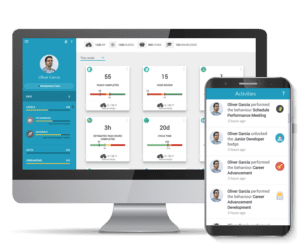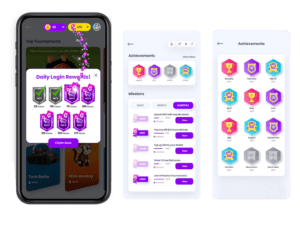
The use of gamification in marketing and sales is nothing new. However, the potential for its widespread adoption across industries has never been greater. As CEOs and marketing managers strive to reach ever-increasing sales goals, they must consider the advantages that gamification can offer – from improved customer engagement to increased loyalty. Now, let’s explore the potential for early adoption of gamification strategies and how they can help drive sales in the near future!
What is Gamification?
Gamification is the use of game mechanics to engage customers and motivate them to complete tasks for users to earn something for themselves: Through a combination of points, rewards, levels, leaderboards, challenges, and more; companies can create an immersive and engaging environment for their customers. Goama has been using this approach to help many companies drive customer loyalty and increase sales.
How Does Gamification Work?
By leveraging game mechanics, companies can create an immersive environment for customers that encourages them to interact with their brand or product in new ways. Companies can use points, rewards, and other incentives to motivate customers to complete certain tasks or purchases or even compete against each other on leaderboards. These kinds of engagement strategies have been proven to increase customer loyalty, boost sales and encourage repeat visits.
Benefits for CEOs and Marketing Managers
The benefits of early adoption of gamification strategies are numerous for CEOs and marketing managers. By incorporating gamified elements into their campaigns, they can reach a larger audience in a more cost-effective way than traditional methods. Additionally, this strategy leads to improved customer engagement and stronger relationships with customers which drives increased sales over time. And finally, through analytics gathered from gamified campaigns, CEOs and marketing managers can gain valuable insights into how their strategies are performing so they can adjust accordingly as needed. Learn more about why you should add games into your existing mobile app, or website!
Examples of Successful Gamification Strategies
There are many examples of successful gamified campaigns across industries that have led to increased sales. For example, Coca-Cola created an online gaming experience that allowed players to collect virtual bottles while playing mini-games – the more bottles collected equated to discounts upon purchase at physical stores. Another example comes from clothing retailer Forever 21 which created a “StyleMe” app where users could earn points by creating outfits from items in the store’s catalog – those points then translated into discounts when shopping at Forever 21 stores or online sites. Last but not least, Snickers launched a new campaign in 2022 to incorporate various games for users to participate in tournaments to earn tickets – users then can use these tickets to redeem prizes and rewards.
Challenges Facing Adoption
Though there are numerous advantages presented by the early adoption of gamification strategies for driving sales increases there are also some challenges that should be taken into consideration as well. Chief among these is customer acceptance – will your target audience respond favorably to this type of marketing tactic? Additionally, budgeting constraints may be an issue if you don’t plan ahead properly – if you’re not careful you may end up spending more money than expected on setting up the campaign itself or offering incentives such as discounts or prizes for playing games, etc.
Conclusion
Now is the perfect time for CEOs and marketing managers alike to explore how embracing gamification strategies can help drive increased sales over the long term. The potential benefits presented by these strategies include improved customer engagement, stronger relationships with customers as well as greater insights gleaned from analytics gathered during campaigns – all of which can help move businesses closer to achieving their goals faster than ever before!






